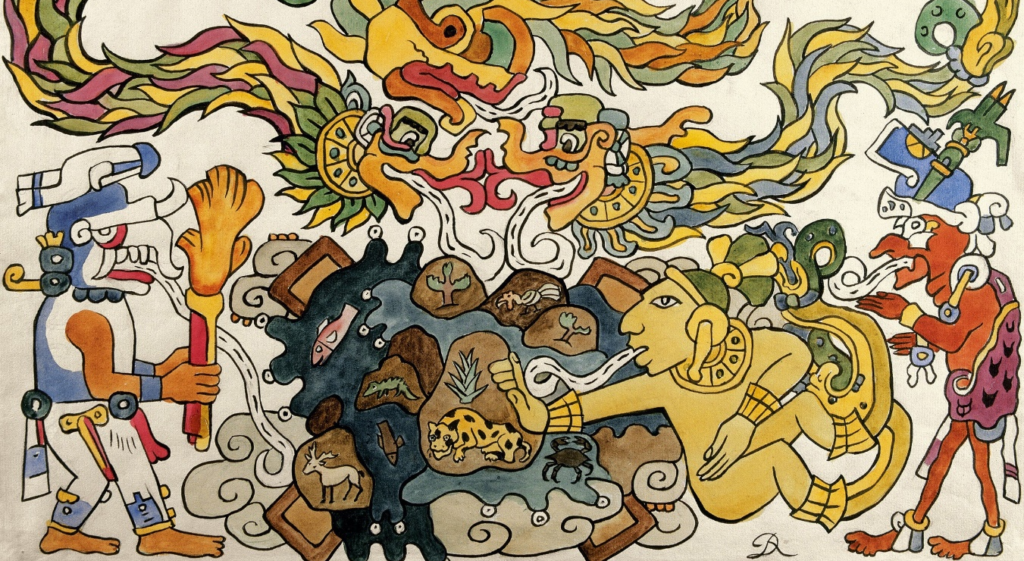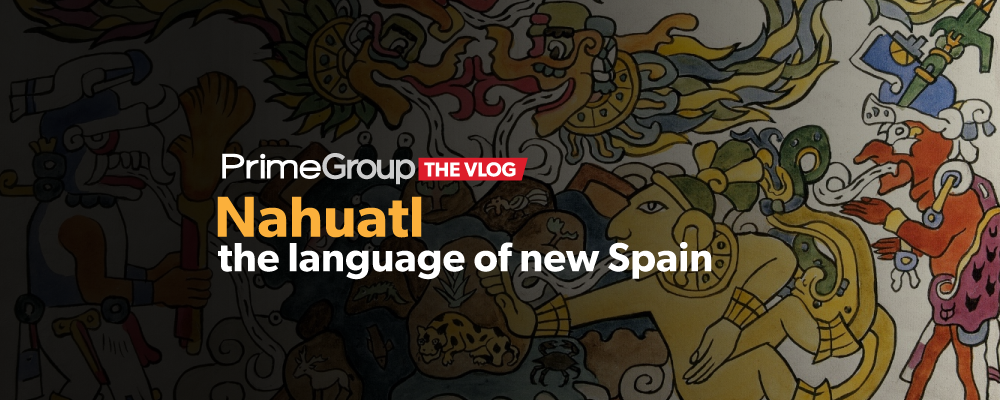It is not the language of Mexico, but rather that of one of the many cultures that populated that territory before the arrival of the Europeans. I am referring to Nahuatl, which curiously reached its peak under Spanish rule, only to languish later. Now there are more than a million and a half speakers of this pre-Columbian language.
Nahuatl is a language belonging to the Uto-Aztecan family, spoken mainly in Mexico. Its origin and development are closely linked to the history of several indigenous peoples of Mesoamerica, especially the Aztecs, also known as Mexicas, who extended their empire and, with it, their language throughout much of central Mexico before the arrival of the Spanish in the 16th century.
Nahuatl originated in northwestern Mexico and the southwestern United States, the territory of the Uto-Aztecan peoples, approximately 1,500 to 2,000 years ago. The migration of these peoples southward into central Mexico brought with it the dispersal of the language. As different groups settled in various regions, Nahuatl began to diversify into various dialects.

During the height of the Aztec Empire, between the 14th and 16th centuries, Nahuatl became the lingua franca of Mesoamerica, used not only for administration and trade, but also in literature and religion. The expansion of the Aztec empire facilitated the spread of Nahuatl, which was spoken from the Gulf of Mexico to the Pacific coast and from central Mexico to southern Guatemala.
With the arrival of the Spanish and the subsequent conquest of Mexico between 1519 and 1521, Nahuatl maintained its importance as a language of interaction between the Spanish colonizers and the indigenous peoples. The missionaries learned Nahuatl and also provided it with a grammar, before such a thing existed in English or French. The conquistadors and their Tlascalan allies relied on Nahuatl speakers and interpreters such as the famous Malinche to extend their dominion over all of Mexico, allying themselves with numerous peoples eager to shake off the bloodthirsty tyranny of the Aztecs. For their part, the missionaries used this language to evangelize the indigenous population. This gave rise to the paradox that Nahuatl had its heyday in the first decades of Spanish domination, when a rich Nahuatl literature was written in Latin characters, including historical, religious and poetic documents.
The Spanish valued the Nahuatl language after the Conquest, choosing to use it rather than impose a linguistic change, due to the challenge of learning the hundreds of indigenous languages that existed in New Spain. They focused on Nahuatl, establishing schools to educate the indigenous nobility in theology, grammar, music and mathematics. In 1570, King Philip II of Spain established Nahuatl as the official language in New Spain to improve communication between the Spanish and natives. During this time, considerable autonomy was allowed in the local administration of indigenous communities, making Nahuatl the de facto language, both in its written and spoken form, in many towns. In Viceregal Mexico, Nahuatl was a respected and respected language, as much or more than Spanish. Everything began to change in the 18th century when Spanish was promoted, although without marginalizing Nahuatl, which until Mexico’s independence was used even in the Courts of Justice. With the independence, different governments promoted Spanish as the national language of Mexico, while the country modernized and undertook major agrarian and economic reforms, particularly under the mandate of Porfirio Diaz.
Despite the spread of Spanish in Mexico, the main Spanish-speaking country in the world, Nahuatl has survived and continues to be used by approximately 1.5 million people in Mexico, making it one of the most widely spoken indigenous languages in the country. However, it faces challenges such as linguistic discrimination, cultural assimilation, and a lack of educational resources in Nahuatl.
UNESCO and other organizations work to preserve and revitalize Nahuatl and other indigenous languages, promoting their teaching and dissemination. In recent years, there has been a resurgence of interest in learning Nahuatl among Mexicans of diverse heritages, as well as among scholars and enthusiasts of Mesoamerican linguistics and culture worldwide.
We have to say that this language has left a great legacy in Spanish with words like “chocolate”, “tomato” and “avocado”, reflecting the profound cultural influence that the Nahua people have had in Mexico and throughout the Hispanic world.



